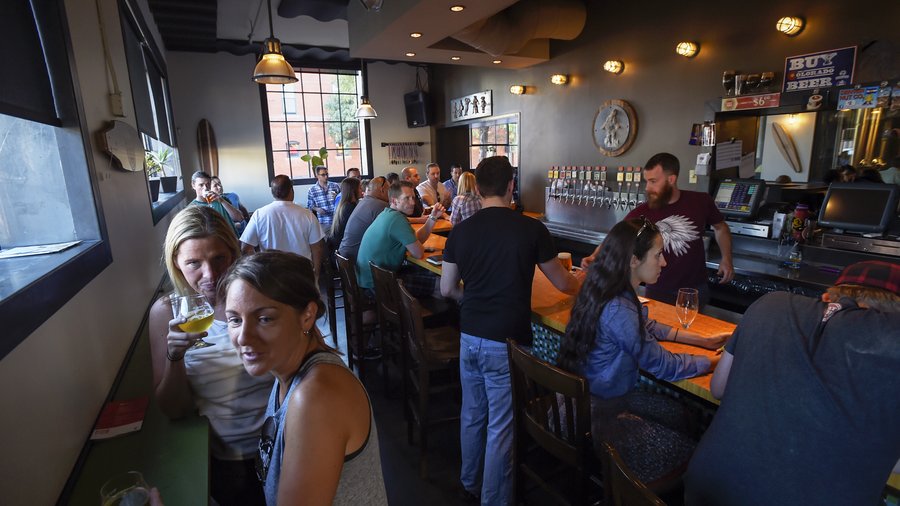The economic impact of Colorado’s craft brewing industry has crossed the $1 billion threshold, and it is not expected to slow or plateau anytime soon.
A new study done by the University of Colorado’s Leeds School of Business for the Colorado Brewers Guild found that smaller, locally owned breweries employ 6,021 workers in the state and have a direct impact of $609 million in terms of payroll, purchases and other activity undertaken by the beer makers and restaurants that are attached to them. Using an industry-accepted multiplier effect, the overall impact rises to $1.15 billion for the year 2014.
That is a significant boost from the $826 million economic impact researchers and the CBG reported in March 2014, though that figure was later revised upward to $1.08 billion for the year. It reflects not just the increasing market share that craft beer is taking locally and nationally, but the increasing number of breweries, as the total of those operating in Colorado grew from 188 at the end of 2013 to 261 at the close of last year.
And with breweries continuing to multiply — there are 309 operating in the state now — and reporting overwhelmingly that they predict growth and expansion over the next year, CBG executive director John Carlson said the report reaffirms the importance of the industry sector to the state’s employment base, manufacturing base and tourism draw.
“We’re an industry that has grown and an industry that is growing,” Carlson said on Friday. “That’s a great story.”
As craft brewery numbers continue to multiply — there were just 124 at the end of 2010, for comparison’s sake — many people have questioned if the brewery bubble is going to burst and local companies will begin to close due to over-saturation and lack of demand.
But Carlson and CBG marketing director Steve Kurowski argued that with craft breweries responsible for just 12.2 percent of the national market currently, there is still a lot of market share to gain. Also, they noted that because many new breweries sell only in their taprooms or in a few select accounts, they have the opportunity to win business from the surrounding area without having to invest in bottling or canning facilities and compete for a more limited space on liquor-store shelves in Colorado.
“If they’re in a neighborhood that embraces them, I see that market moving on in perpetuity,” Carlson said, noting that six to eight breweries are opening a month, but that many suburbs or mountain towns still have few to none within their boundaries. “When they cross over to the packaging sector of the business, things get more complex.”
The release of the report comes as craft breweries prepare to lead the campaign against an expected 2016 ballot initiative that would allow grocery stores to sell full-strength beer — a development that CBG leaders have said could lead to the closing of numerous liquor stores and make it harder for small breweries to get their products onto shelves, especially in corporate stores without out-of-state headquarters. Carlson noted that while the study found that current access to market is the top factor influencing brewery growth, a fear of lack of future market access ranked sixth among factors brewers believe will inhibit their growth.
The study presents different numbers than other national economic-impact studies released this year that list the economic impact of breweries in Colorado because it focuses solely on craft breweries and does not consider as many indirect economic factors, such as the influence of the industry on the success of bars and restaurants.
However, it still gets across the message that the craft-brewing industry is one that should not be ignored when state lawmakers craft business regulations and when Colorado Tourism Office officials tout the unique benefits of the state, Carlson said.
“The growth is pretty much what we expected,” he added.

